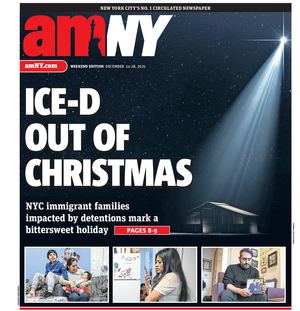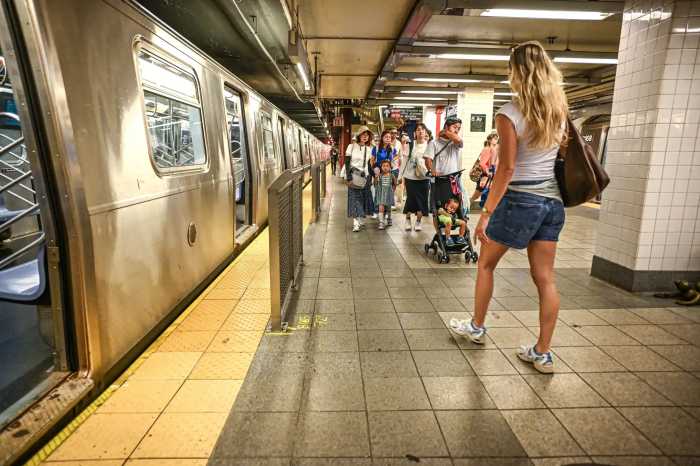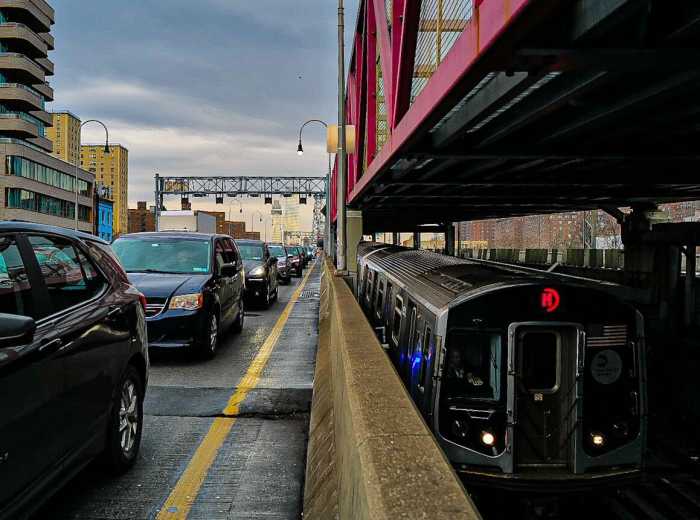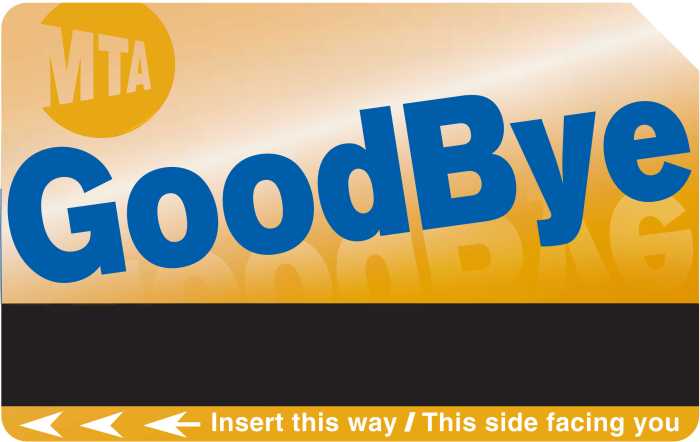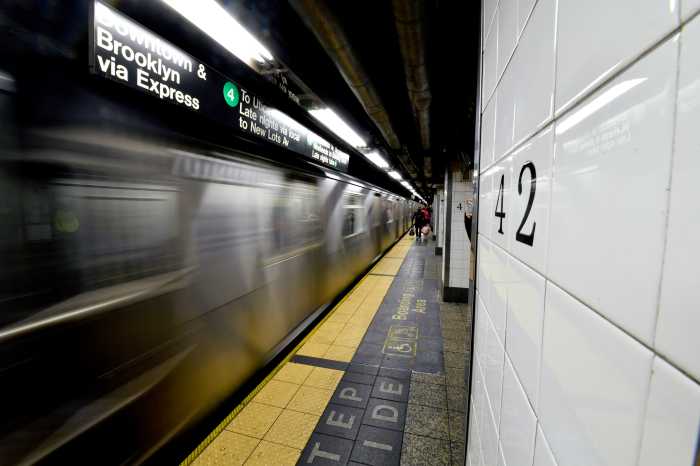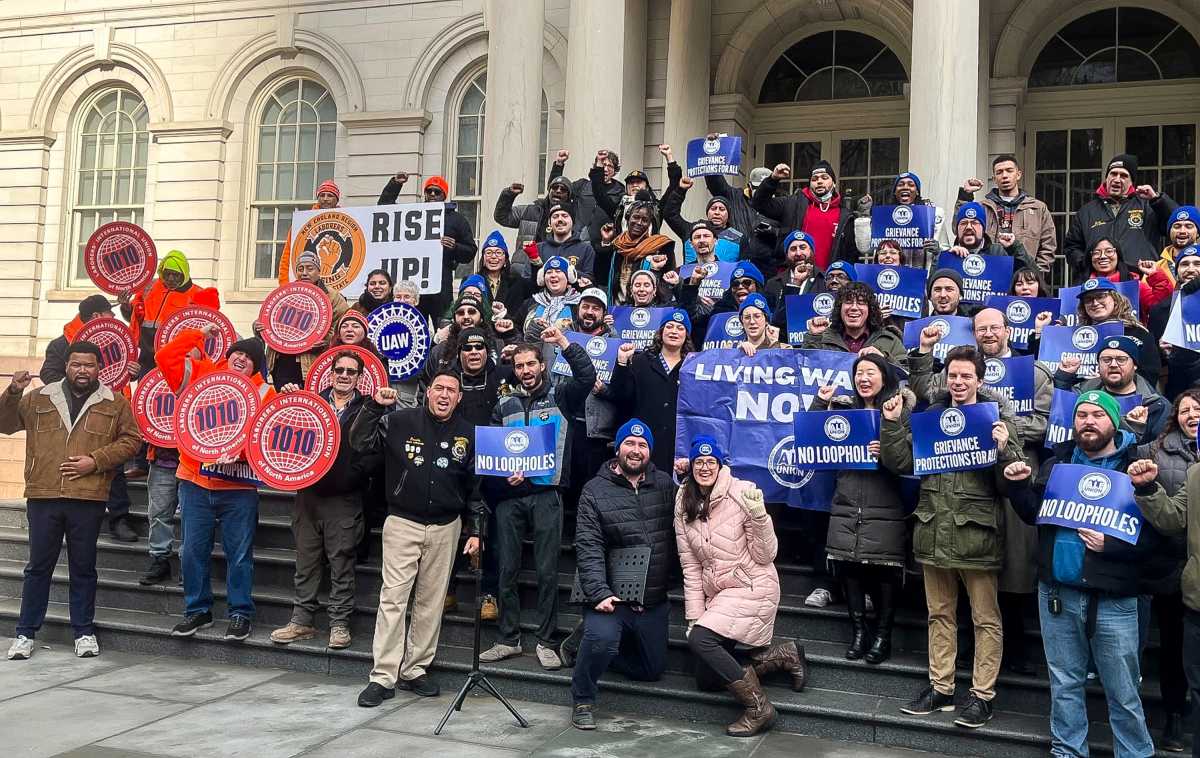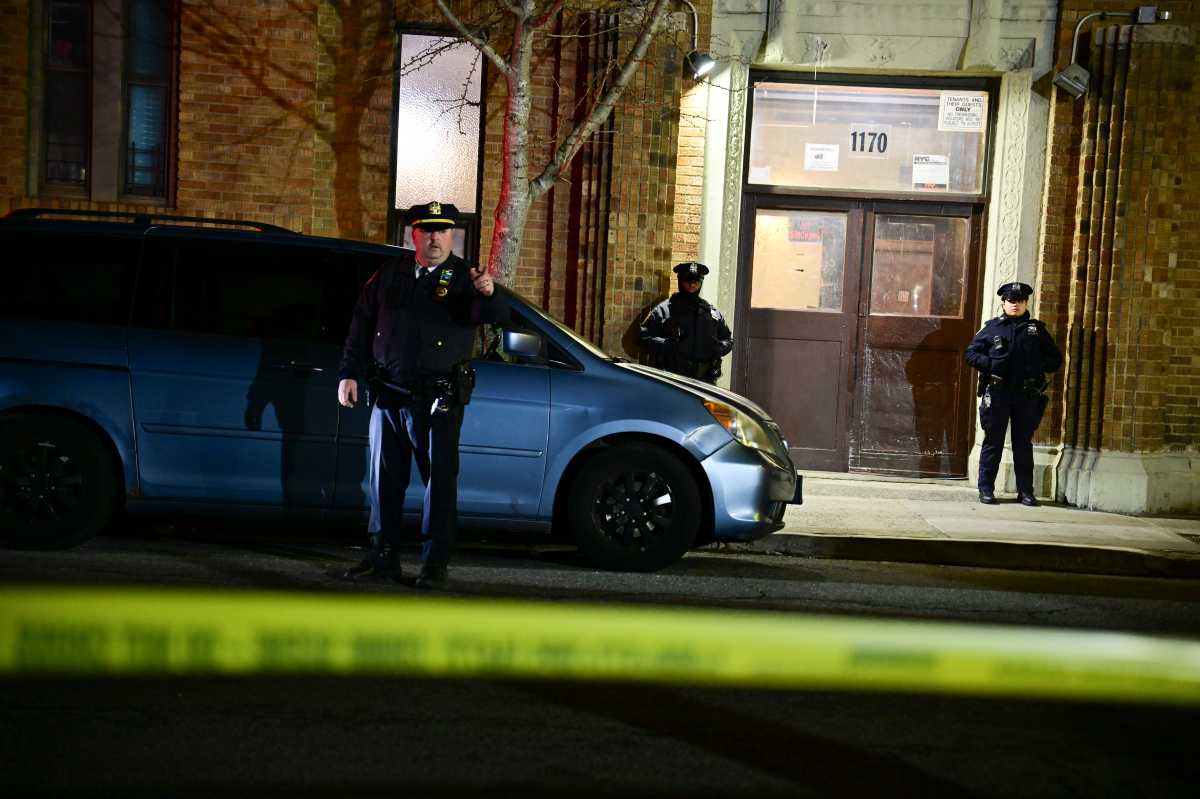This Saturday, there will be a 270-foot waterslide installed near Foley Square, occupying space normally reserved for the chaotic whirl of activity that defines the streets near City Hall and other government buildings.
The slide is one of the main attractions at this year’s Summer Streets, where the city will again close down a nearly 7-mile stretch through Manhattan in celebration of what it describes as its “most valuable public space”: its roughly 6,000 miles of streets.
The route, as usual, runs from East 72nd Street and down Park Avenue, Fourth Avenue, Lafayette Street and Centre Street to City Hall. The closures will take place for six hours, from 7 a.m. to 1 p.m., on Aug. 5, 12 and 19.
City officials and transit experts agree that Summer Streets has been wildly successful — last year an estimated 300,000 people attended — but some believe there is room for the city to expand the concept in its 10th year.
“Part of its success is a lack of available public space and part of it is that every New Yorker wants to do something unique and special — and what’s more special than walking or biking on Park Avenue, where you’d usually be facing traffic at 30 miles per hour,” said Sarah Kaufman, of the NYU Rudin Center for Transportation. “I think it would be fun to extend it to other parts of the city, say a major thoroughfare in all five boroughs.”
This, Kaufman admits, would require a good deal of additional resources, including a large number of additional police officers and solid planning to reroute traffic.
A spokeswoman for the Department of Transportation said, “We plan to keep our popular event running as it has, with small changes we’ve made to accommodate growth over the years.”
Joseph Cutrufo, the communications director at the Tri-State Transportation Campaign, believes the event hints at what’s possible when the city redistributes its street space to pedestrians and cyclists as a means to promote more open space and more effective transportation options than the private automobile. Using 2015 Census Bureau data, Tri-State found that 54.5 percent of New York households don’t own automobiles.
“The bigger picture is about ending the primacy of the automobile — if there’s one place in America where we can do this, it should be New York City,” he said.
The city has held a number of temporary open street-type events in addition to Summer Streets, including Car Free Day to celebrate Earth Day and the Shared Streets initiative, but it’s still decades behind other European cities when it comes to pedestrianizing city streets.
Bogota, Colombia, which inspired Summer Streets, has a nearly 70-mile car-free route through the core of the city that each Sunday attracts more than one million people. More recently, Paris has moved to pedestrianize a busy highway along the right bank of the Seine for a six-month pilot. Oslo, to curb emissions and meet a growing population, is attempting to ban vehicular access to its downtown by 2019.
Manhattan’s West Side, the narrow streets of the Financial District, or even Broadway, which disrupts the grid, could be ripe for such a makeover, some say.
“Cars are becoming anachronistic in the city and it comes hand in hand with the way the city is changing … residential areas have expanded throughout New York and the outer boroughs and with that is the demand for recreational space and the streets are part of where the opportunity is for that,” said Jonathan Cohn, a principal at the planning firm Perkins Eastman, which has pitched a concept to turn Broadway into a park space for 40 blocks in the heart of Manhattan.
There are several issues holding New York behind other cities, including lack of long-term planning from elected officials and small, oftentimes misallocated investments in transit, said Tom Angotti, professor emeritus at Hunter College’s Urban Policy and Planning department. Only 36.2 percent of Queens householders and 17.8 percent Staten Island households don’t own cars, according to Tri-State, areas where the public transportation infrastructure lags behind other parts of the city.
“You can’t take people’s cars away unless there are good alternatives,” Angotti said. “And that will require big steps to reorganize the transportation system — exclusive bus lanes and more protected bike lanes, congestion pricing. City Hall has only taken baby steps in the last 30 years.
“Instead, they’ve invested in really short-term, highly expensive capital projects like the [$4.5 billion] Second Avenue subway,” he added. “For that money, we could have had a first-class bus system serving all the people in the outer boroughs who don’t have adequate access to mass transit now and who wind up owning cars because of that.”
